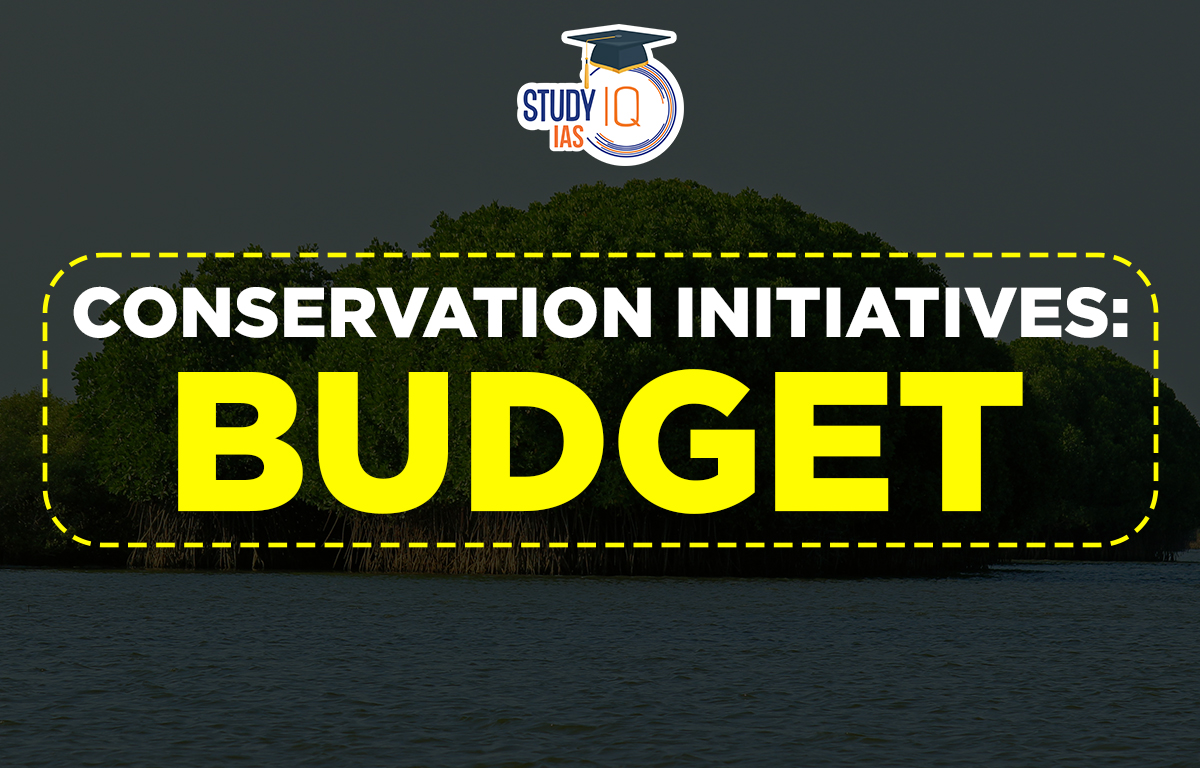Table of Contents
Context: Recent union budget introduced schemes and policies aimed at ecological conservation.
More on the News
- These schemes come with the promise of preserving India’s ecological health.
- This is part of a larger “green push” with focus on the environment and climate change. The following are the schemes announced.

MISHTI (Mangrove Initiative for Shoreline Habitats & Tangible Incomes)
- Aim: Intensive afforestation of coastal mangrove forests.
- It will facilitate mangrove plantation along India’s coastline and on salt pan lands.
- It will operate through convergence between MGNREGS, Campa Fund and other sources.
Significance of Mangrove
- Carbon sinks: They act as effective carbon stores, holding up to four times the amount of carbon as other forested ecosystems.
- Mangrove forests consisting of trees & shrub and live in intertidal water in coastal areas.
- Rich Biodiversity: Mangrove forests support a rich food web, with molluscs and algae-filled substrate acting as a breeding ground for small fish, mud crabs and shrimps, thus providing a livelihood to local artisanal fishers.
- Protect coastlines: Mangrove plantations have shown to make coastal lands resilient, preventing flooding, land erosion and acting as a buffer for cyclones.
- Resilient: Mangrove trees can grow in saline waters, and can sequester up to four times more carbon than tropical rainforests.
Mangrove Alliance for Climate (MAC)
- It seeks to educate and spread awareness worldwide on the role of mangroves in curbing global warming and its potential as a solution for climate change.
- Members: United Arab Emirates (UAE), Indonesia, India, Sri Lanka, Australia, Japan, and Spain.
- India holds around 3% of South Asia’s mangrove population.
- India has such forests on both its Eastern and Western coasts with the Sundarbans in Bengal being one of the largest mangrove forests on the planet.
Amrit Dharohar
- About: It will be implemented over the next three years to encourage the optimal use of wetlands, and enhance biodiversity, carbon stock, eco-tourism opportunities and income generation for local communities.
- Aim: To achieve sustainable ecosystem development with the help of local communities, through a participatory approach.
- It emphasises the importance of wetlands and their preservation.
Ramsar Sites
- Ramsar sites are wetlands of international importance that have been designated under the criteria of the Ramsar Convention on Wetlands (1971) for containing representative, rare or unique wetland types or for their importance in conserving biological diversity.
- These sites sustain a diverse variety of flora and fauna, from endangered aquatic life to migratory birds.
- Total number of Ramsar sites in India is 75. Tamil Nadu has highest number of such sites.


 Question Hour in Parliament: Meaning, Ty...
Question Hour in Parliament: Meaning, Ty...
 Daily Quiz 18 July 2025
Daily Quiz 18 July 2025





















